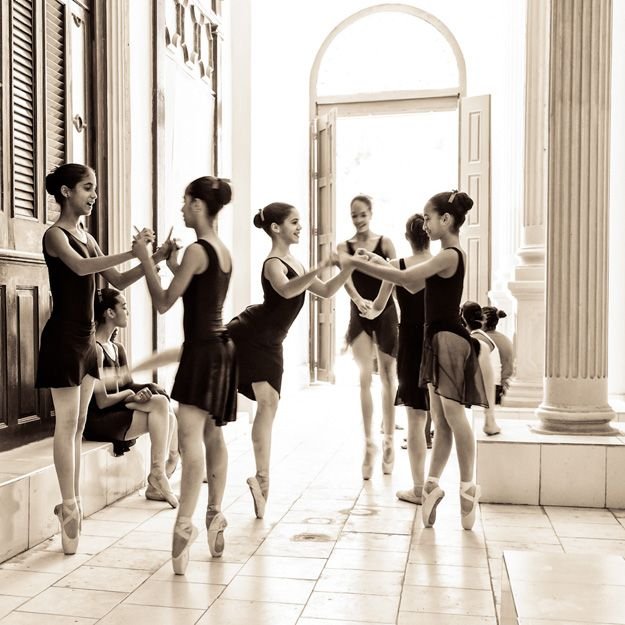Characteristics of the Cuban School of Ballet.
Photo by Rebekah Bowman
The Cuban School of Ballet is defined by specific principles that distinguish it worldwide. These unique characteristics are taught and honed within the ballet class:
- Grand Balance and Equilibrium:
Progressing from barre exercises to center work, each segment concludes with a balance, intensifying in complexity as the class advances.
- Continuous Pursuit of Aesthetic Lines:
A commitment to crafting lines with the legs, arms, and head, emphasising the importance of elongation to create a perception of endless fluidity in the dancer's form. an example of it is Arabesque.
- Demi plié as the beginning and end of all movements:
Devoid of this element, ballet loses its flexibility and lacks the graceful flow that imparts the illusion of seamless movement.
- Cuban Port de Bras Emphasis:
Highlighting traditional Cuban characteristics, such as the use of gestures and expansive arm movements, particularly in port de bras exercises. Arms are rounded and in a descending line with supported elbows.
- Maximum Relevé and Turnout:
Striving for excellence by consistently maintaining a high relevé, achieving maximum turnout (en dehors) up to 180 degrees, demonstrating a commitment to technical precision.
- Precise and Elevated Passé:
The passé is elevated, forming a 90˚ angle between the torso and the knee.
- Dynamic Jumps with Upward Accent:
Jumps are dynamic, showcasing lightness in the legs and the sensation of suspension in the air.
- Controlled Turns with Suspension:
We work on both slow and fast turns, always precise with a very high relevé and concluding turns with an upward motion, creating a sense of suspension and lift.
- Distinctive Sense of Elevation:
Cultivating a unique emphasis on a feeling of suspension and elevation in movements.
- Relevé Technique:
Significant focus on working through relevé to ¾ of ½ pointe, contributing to an upward dance expression.
- Complete Turnout (180º):
Achieving a full turnout of the legs, adding a level of difficulty and grace to the movements.
- Expansive Gestures:
Incorporating broad and expressive gestures that reflect the distinctive characteristics of Cuban dance.
- Strict Footwork:
Ensuring meticulous attention to the feet, requiring them to convey expression in harmony with the hands.
- Emphasis on Connecting Steps:
Highlighting the importance of seamless transitions between steps, incorporating turnout, insteps, and a unique rhythm.
- Masculine Presence on Stage:
Encouraging a portrayal of masculinity by male dancers, contributing to a diverse and dynamic stage presence.
- Square Attitude Position:
Executing the attitude position with a squared alignment, enhancing the visual impact of the pose.
- Focus on Musicality and Rhythm:
Prioritizing a heightened awareness of musicality and rhythm, enriching the overall dance experience.
- Unique Running Steps:
Tailoring the steps of female dancers with upward movements and short steps on ¾ of ½ pointe, while male dancers utilize elongated steps, maintaining a sense of upward motion.

